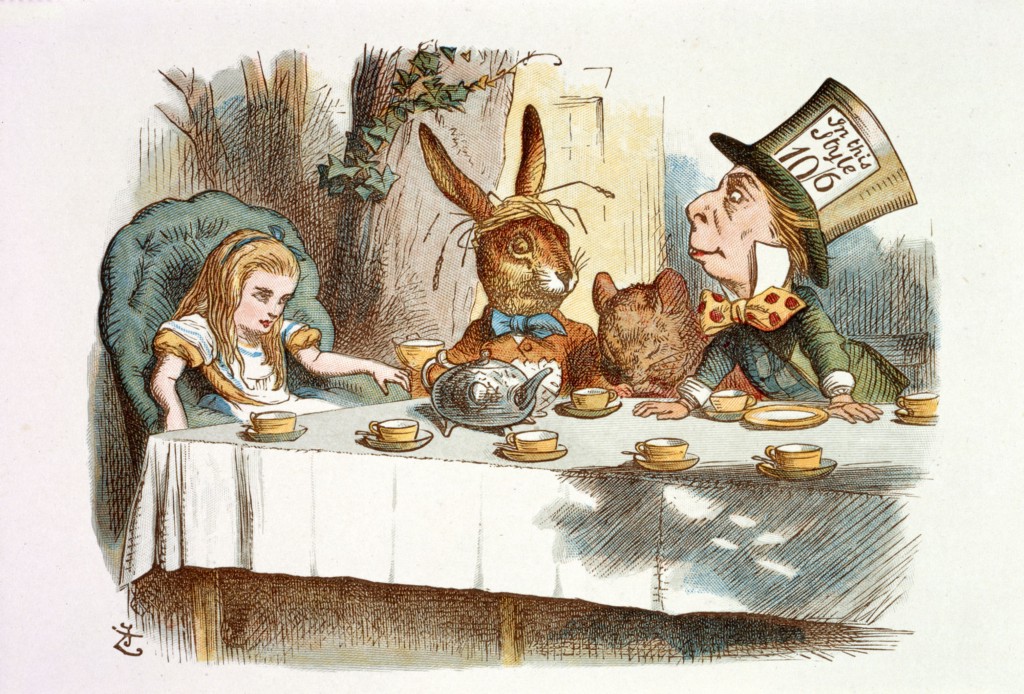A True New York City Restaurant Fairy Tale

Once upon a time, like six years ago, there was a restaurant called Torrisi Italian Specialties, and it served miraculous turkey sandwiches for lunch and magical tasting menus for dinner for like fifty bucks or so, and it was loved throughout all the land.
People loved Torrisi’s Italian sandwiches so much that the wizards behind it, Mario Torrisi and Rich Carbone, and later, Jeff Zalaznick — who called themselves “Major Food Group” — decided that they needed to make a new shop that was totally dedicated to Italian sandwiches and more than twice as big as Torrisi, so that everybody who wanted a sandwich could get one, and they called this new sandwich shop Parm. And because Torrisi Italian Specialties didn’t have to worry about making so many sandwiches anymore, it could make dinner even fancier. And everybody loved it too.
For their next trick, the wizards decided that they would use their powers to bring back a lost cuisine from the ancient past: mid-century Italian-American red sauce. Though it drew on some dark powers — there’s always a cost to bringing things back from the dead — the spell that created Carbone was masterful. The gently rude waiters were wrapped in burgundy tuxedos designed by Zac Posen; the floor was drawn from The Godfather; and the Caesar salad was hand-tossed at your table, while the classics, “Seafood Salad, Linguini Vongole, Lobster Fra Diavola, Chicken Scarpariello and Veal Parmesan [were] elevated to a new level.” And (almost) everybody loved it too. But a few people saw the $50 Veal Parm and the $38 scampi and the $48 antipasti tasting and the $78 lobster fra diavolo and whispered, “Why so expensive?”
The wizards, realizing the scope of their new powers in a land beginning to be reshaped by the resurgent forces of Capital (which had briefly retreated just a few years earlier), conjured another restaurant shortly after Carbone, called ZZ’s Clam Bar. Inside, there were exotic potions and plates of exquisite creatures, served raw so they were still full of life. And everybody who get past the colossus standing guard outside loved it too. The people who were left outside looked over the menu, with its $20 cocktails and $95 tartare and $38 snapper and $40 langoustines whispered, a little louder this time, “Why so expensive?”
This, it turned out, was the real beginning: The wizards began unleashing their full power, and in the span of eighteen months, opened one restaurant, called Dirty French, which demonstrated their still-growing ability to warp time and space around themed menus (the restaurant takes “timeless dishes and preparations of the classic French bistro and enlivens them utilizing modern techniques and bold flavors”), and another, called Santina, inside of a beautiful glass box located under a bridge to nowhere that exerted a powerful pull on visitors from other lands. They also revealed their plans for more Parms and Carbones, to spread their Italian sandwiches and tectonic plate-sized veal parms around the world, so everyone could get a taste of their sorcery, and announced Sadelle’s, a New York bakery and deli with four kinds of everything bagels and that, every night, magically transforms “into a fantastical brasserie that is illuminated solely by candlelight.” And when Sadelle’s opened at the end of 2015, everybody pretty much still loved everything. But a few more people than before, realizing they had been charmed into purchasing $17 egg sandwiches $29 Hebrew National sandwiches, and $70 vodka carafes (or $135 Stoli Elite Carafes), asked, louder than ever, “Why so expensive?”
But no one realized quite how powerful or how dark forces around the wizards had become until, joining with a powerful troll named Aby Rosen, they conquered a strange, far away land (like fifty blocks!) known as the Four Seasons, populated entirely by a race of giants who are so magically and exceedingly wealthy that they have never asked, for any reason, “Why so expensive?”
But it turned out that remaking this far away land in their own image came at a cost even higher than they had imagined, and so the wizards asked others to pool their powers:
To perk interest and attract attention to the venture, Rosen sent out marketing materials enclosed in a marble box shaped like the famous square pool that sits inside the landmarked restaurant space.
According to several real estate executives who have been solicited or have viewed the mailer, Rosen is promising investors a 120% return before he and his partners take any proceeds and then a 40% cut of future profits. Rosen and Major Food Group would pocket the remaining 60%.
No one is quite sure how this tale ends, but probably something like, “Everybody lived happily ever after, gorging on veal parm and everything bagels and turkey sandwiches and duck l’orange, or at least everybody that could afford it, which was just a few people, but consider just how happy they were, even though nobody lived quite as happily ever after as Major Food Group.”
This tale is greatly indebted to this exceedingly thorough Grub Street timeline.
